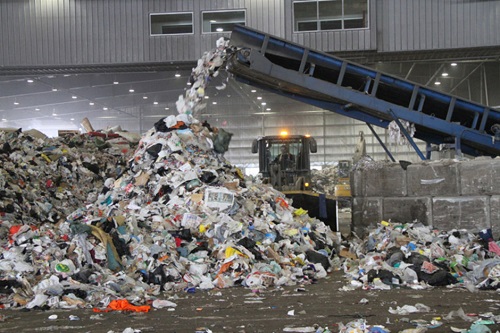As the global population continues to grow at a steady pace, a number of challenges emerge. There’s now an urgent need to adopt better waste solutions. At the same time, it’s paramount to think about the ways to decrease our dependence on fossil fuels and instead turn to technologies that allow us to harness the full potential of renewable energy sources.
This is exactly where waste-to-energy (WtE) projects come into play. WtE refers to converting diverse waste types – such as animal, clinical, construction, solid municipal, food, industrial, organic, plastic, rubber, and wood – into usable forms of energy. Not only has traditional waste incineration developed into a highly efficient energy recovery process, there are now other renewable strategies driving the success behind the waste-to-energy endeavor.
With many opportunities on the horizons, how can we expect the sector to develop further?
Waste-to-energy developments across the globe
Between 2018 and 2026, the WtE industry is predicted to see a 70% growth rate in the global market. More countries are now looking for solutions to dispose of waste, and limits on recycling exports have made many rethink their strategies. Also, the environmental calls for better utilization of existing resources have prompted a variety of public institutions, commercial banks, multilateral development banks, financial sponsors, and NGOs to tap into WtE.
The most traditional WtE strategy is waste incineration. In the US, there are now 71 incineration-based WtE plants that account for 0.4% of total electricity generation. There is immense potential to increase this percentage, especially considering the amount of waste the country produces. In contrast, China has over 430 WtE plants under operation, making the country the fastest-growing WtE market in the world. Another WtE superpower is Japan, which has over 380 WtE plants and actively exports its expertise and technology.
In Europe, countries like the UK, Denmark, the Netherlands, Austria, and Germany show great commitment to the WtE process. In the future, we’re expecting Poland and Spain to emerge as key sector players as well. As EU members will only be permitted to dispose of no more than 10% of their municipal waste to landfills, this could be another significant step for WtE adoption.
However, we’re seeing key players from all around the world advancing other WtE strategies as well. In countries like Pakistan, India, or Tanzania, even smaller entities such as individual farmers are increasingly engaged in WtE projects and energy transport logistics, showing that the sector has space for diverse strategies done at a different scale, all around the world.
How technology advances WtE
Waste to energy plants today are far more advanced than the trash incinerators of the past, and the sector is constantly evolving. Different innovations are focused on reducing the carbon footprint while maximizing the efficiency of the energy recovery process and reducing the amounts of released pollutants. Pyrolysis, for example, leverages the absence of oxygen to trigger thermal decomposition and is highly efficient with promising eco-friendly characteristics.
Various noteworthy innovations come from emerging markets: Fluidized beds, for example, present a cleaner WtE technology. Gasification plants, on the other hand, have advanced the use of plastic and organic solid waste to advance chemical conversion. Moreover, there is now research on combining water treatment facilities with WtE plants, something that could further drive efficiency.
However, technology is disrupting WtE way beyond physical setups. Powerful software is now being deployed to streamline WtE energy recovery, energy transport logistics, and stakeholder communication. It goes without saying that digitization initiatives give renewable energy a new facade, further increasing its efficiency and competitiveness.
WtE amidst the pandemic
While some projects have managed to cross the finish line even despite the pandemic, such as the massive 103MW WtE facility in Serbian Belgrade, the sector has generally seen a slowdown. The crisis is already impacting contractual project development and construction timelines; for example, the Canadian initiative to divert almost all of Sylvan Lake’s waste from its landfill will probably delay its opening to the end of 2021.
Existing projects might also be affected as the pandemic has impacted the amount of waste being created. With lower amounts of commercial and industrial waste, some facilities might struggle to meet their goals. However, the increased awareness of environmental issues could now bring smaller initiatives into the spotlight, giving them the opportunity to become a part of a global WtE network. Either way, there’s now an even greater need for clear communication across stakeholders to best navigate the shifts brought by COVID-19.
Renewable energy sources have come a long way since those initial days of organic material incineration. There’s now a vast palette of WtE strategies out there, catering to many different waste types. And with new actors and powerful technologies entering the field, a renewable future is closer to our reach than ever before.
If you’re interested in learning more about waste-to-energy processes, contact us here.
